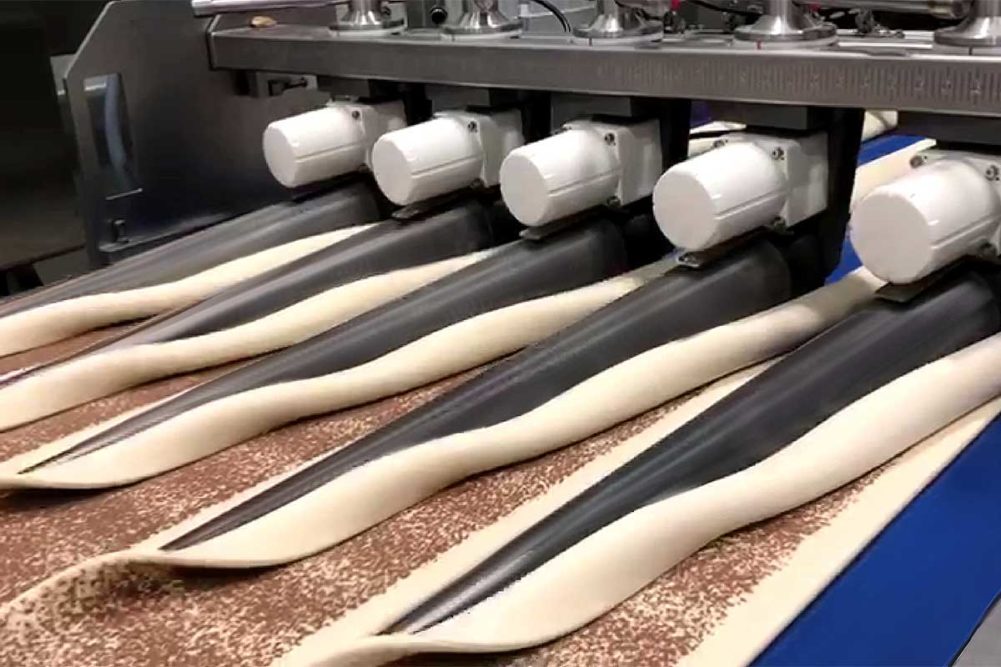Flexible equipment is a must for bakers producing a range of products, especially as the processing requirements of these goods can vary.
“Bakers need to be responsive to their customer requests, and even be agile enough to change directions on the daily production needs depending on their own workforce or external factors,” explained Nick Magistrelli, vice president of sales, Rademaker USA. “Equipment manufacturers are making sure the new designs provide for the mechanical availability to be flexible with manual and physical adaptations or tools to make this possible.”
Rademaker’s Radini brand offers semi- and fully automated equipment for pastry makeup, including rolling, folding, cutting and braiding capability on working widths ranging from 600 mm to 800 mm (23.6 inches to 31.5 inches) for added flexibility.
Pastry manufactures often produce multiple products, some of which may or may not require lamination, on the same line, observed David Moline, president, Moline Machinery. For these operations, Moline offers an inline laminator, allowing product to either be diverted and laminated or passed through. The company also provides modular makeup systems for egg-wash, filling, topping and more that can be easily rolled in and off the line.
“[Bakers] may be asked to make a different product entirely from what they’re making today sometime down the road,” he said. “You really want to make sure you account for that and allow them to come to market quickly with a new product. You have to look at the whole product mix and where you can future-proof the line. And a lot of that is with modularity in the makeup section or in the laminating section.”
Stefan Praller, senior director, customer experience, Fritsch, a Multivac Group company, echoed this, noting tools like coiling in-rollers, folding plough units, strewing units and more can be integrated into the line to achieve flexibility.
Depositors are increasingly versatile as well, pointed out Sonia Bal, director of marketing, Unifiller, and can be customized with product cylinders, hoppers and other attachments to let bakers easily switch between products.
“The same depositor that a bakery may use to inject pastries really quickly can also be used to quickly and accurately deposit batter portions,” she said.
Flexibility can also be found at the oven. Nicola Menardo, president, TP Food Group, North America, noted that thermal oil spiral ovens, for example, offer pastry manufacturers maximum versatility in the variety and number of products they can bake at a time.
“This is possible due to the low thermal inertia of the spiral oven and thanks to the fact that such ovens yield an even bake, even when the belt is not fully loaded or when production flow is not homogenous,” he explained.
While certain steps of the production process may be prime for automation, the need for flexibility means some areas should be left more manual, Moline emphasized.
“Oftentimes, it’s rack proofers and rack ovens, which give you a lot of flexibility for different proofing times,” he explained. “We still do some very high-volume systems where we are loading pans. It just makes sense opposed to a tunnel oven or a continuous proofer where the capital investments are very high, but there’s less flexibility. It’s all about striking that balance.”
This article is an excerpt from the February 2024 issue of Baking & Snack. To read the entire feature on Sweet Goods Processing, click here.





